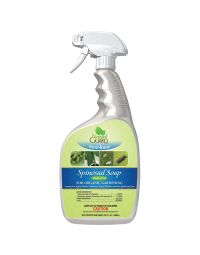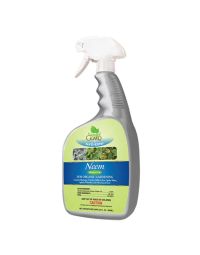The bees get the buzz on pollination, but butterflies also play a role. The garden that attracts butterflies is full of surprises as it is constantly changing. With a little bit of planning, you can make your landscape irresistible to them while creating a colorful, pollinator friendly environment.
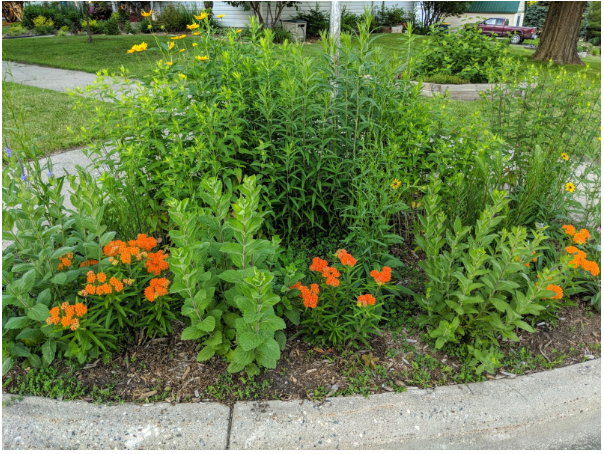
Diversity of plants in butterfly garden (photo taken in mid-June)
Planning Suggestions
It is important to stress that if you are trying to entice butterflies (as well as hummingbirds and other insect eating birds and bats) to your yard, you will need to give up the use of insecticides / pesticides and many herbicides.
Most of these chemicals are broad spectrum and will kill any “insect”, good or bad.
- Herbicides may kill the host plants that butterflies use to lay their eggs.
- There are organic ways of controlling unwanted insects such as Natural Guard Lawn Shield Insect Repellent or Natural Guard Diatomaceous Earth
- Biological controls include lady bugs and praying mantis, which we sell at Gertens.
Butterfly needs
- Broad, sunlit areas to warm their bodies and allow them to stay active.
- Simple boulders or flat cut-stone in sunlit areas provide good resting places.
- A stone wall offers natural shelter from the weather.
- Butterflies also need shelter from wind and weather which can easily be provided with taller shrubs and trees.
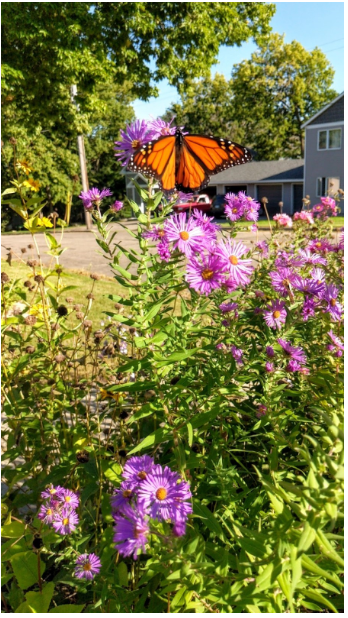
Monarch visitor on asters
Planting
A progressive garden with plants maturing and setting seeds at different times throughout the season increases your chance of success.
- Most butterflies are attracted to colors in shades of pink, red purple, yellow, and orange.
- Arrange your plantings in broad masses rather than a mix of color.
- Look for flower types with large flat flower heads, or plants with clusters of short tubular flowers.
- Butterflies are not only looking for nectar plants, but host plants on which to lay their eggs.
Plants
Easy perennials to get your butterfly garden started.
- Achillea 'Strawberry Seduction'
- Allium 'Summer Beauty'
- Aster 'Wood's Blue'
- Hemerocallis 'Stella De Oro'
- Liatris 'Kobold'
- Monarda 'Bubblegum Blast'
- Nepeta 'Walker's Low'
- Phlox 'David'
- Salvia 'Sensation Deep Blue'
- Sedum 'Autumn Joy
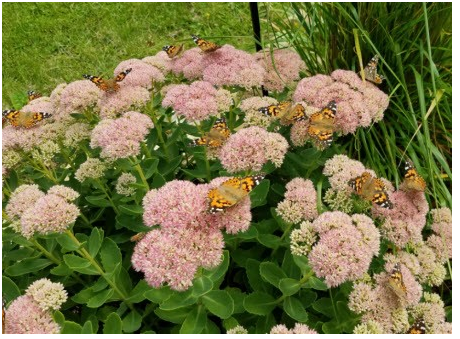
Painted Lady butterflies on Sedum ‘Autumn Joy’
Annuals - check out Gertens Annuals greenhouse
- Ageratum
- Antirrhinum majus (Snapdragon)
- Aster
- Coreopsis
- Dahlia
- Delphinium (Larkspur)
- Gomphrena (Globe Amaranth)
- Impatiens
- Ipomoea (Morning Glory)
- Papaver (Poppy)
- Tagetes (Marigold)
- Tropaeolum (Nasturtium)
- Verbena
- Violas(Pansy)
- Zinnias
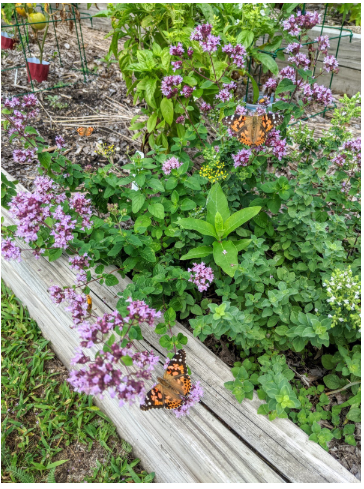
Ornamental oregano
Perennials
- Asclepias (Butterfly Flower)
- Aster (Hardy Aster – good larval host; fall flower)
- Astilbe (False Spirea)
- Bergenia (Pigsqueak)
- Buddleia (Butterfly Bush)
- Coreopsis (Tickseed)
- Delphinium (Larkspur)
- Dianthus (Pinks - Sweet William)
- Echinacea (Coneflower)
- Eupatorium (Joe Pye Weed)
- Leucanthemum (Shasta Daisy)
- Liatris (Gayfeather/Blazing Star)
- Lupinus (Lupine)
- Monarda (Bee Balm)
- Origanum (Ornamental Oregano – late summer, early fall)
- Papaver (Iceland or Oriental Poppy)
- Phlox (Garden Phlox)
- Rudbeckia (Black-eyed Susan)
- Scabiosa (Pincushion Flower)
- Sedum
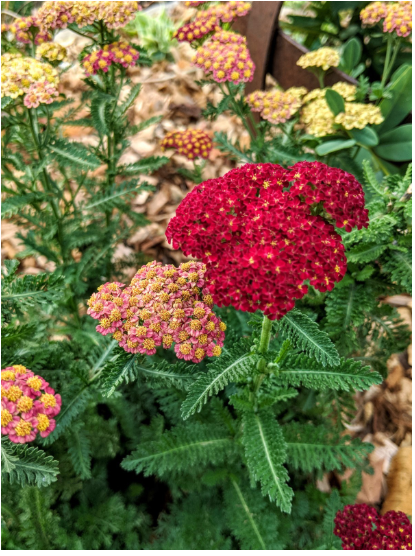
Yarrow
Shrubs
- Clethra alnifolia (Summersweet) - 'Ruby Spice'
- Forsythia
- Fothergilla
- Rhododendron
- Spiraea (Spirea)
- Syringa (Lilac)
- Viburnum
Trees
- Amelanchier (Chokeberry)
- Catalpa
- Cercis (Redbud)
- Sorbus (Mountain Ash)
- Tilia (Linden)
Common Butterflies and Their Host Plants
14 common butterflies and moths and some of their larval plants:
- Monarch Butterfly - Milkweed, Butterfly weed
- Mourning Cloak - Willow, Birch, Poplar, Stinging Nettle
- Red Admiral –All plants in the Nettle family
- Spring Aure - Dogwood, Viburnums, Spirea
- Tiger Swallowtail - Willow, Cherry, Linden, Birch leaves
- Black Swallowtail - Dill, Carrot, Parsley, Queen Anne's Lace
- Painted Lady - Pearly Everlasting Daisy, Hollyhock, Sedum
- Buckeye - Snapdragon, Plantain, Stonecrop aka sedum
- White-lined Sphinx - Virginia Creeper, Grape
- Hummingbird Clearwing - Viburnum, Hawthorn, Honeysuckle
- Fritillary - Violets
- Luna Moth - Hickory, Maple, Oak, Birch
- Cecropia Moth - Silver Maple, Maple, Oak, Cherry
- Polyphemus Moth - Oak, Hickory, Elm, Maple
The experts at Gertens are always available to answer your questions!

